.
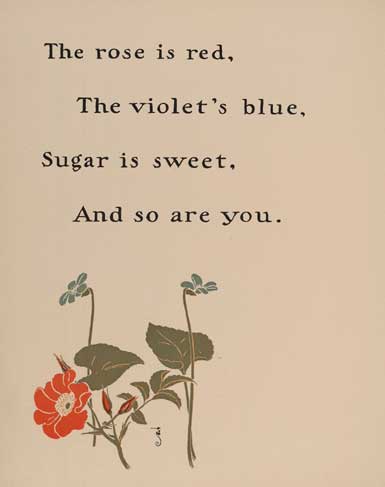
The rose is red: from Denslow's Mother Goose, W.W. Denslow, 1901 (hand-lettering by Fred W. Goudy)
Art has been used in English from the 13th Century. It was widely applied without predominant specialization, until the late 17th Century, in matters as various as mathematics, medicine and angling. In the medieval university curriculum, the arts… were grammar, logic, rhetoric, arithmetic, geometry, music and astronomy. Artist, from the 16th Century on, was first used in this context, though with almost contemporary developments to describe any skilled person.
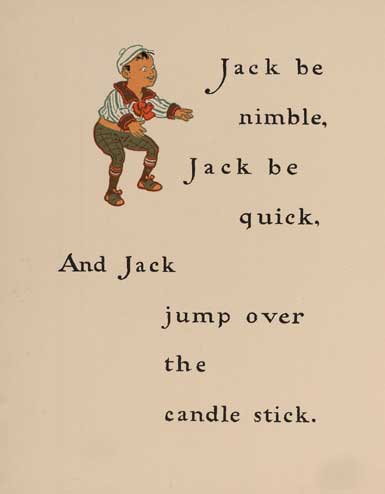
Jack be nimble: from Denslow's Mother Goose, W.W. Denslow, 1901 (hand-lettering by Fred W. Goudy)
The emergence of an abstract, capitalized Art, with its own internal but generalized principles, is difficult to localize. There are several plausible 18th Century uses, but it was in the 19th Century that the concept became general.
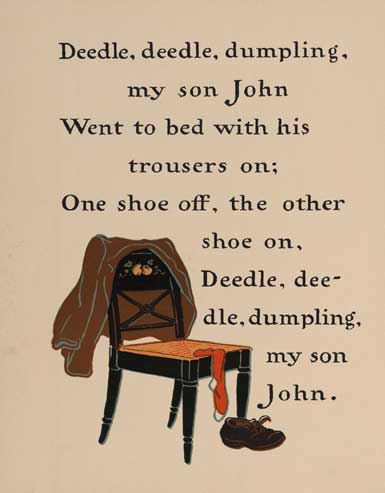
Deedle, deedle, dumpling: from Denslow's Mother Goose, W.W. Denslow, 1901 (hand-lettering by Fred W. Goudy)
It can be primarily related to the changes inherent in capitalist commodity production…[as a]…defensive specialization of certain skills and purposes…not determined by immediate exchange (value)….This is the formal basis for the distinction between ….fine arts and useful arts.
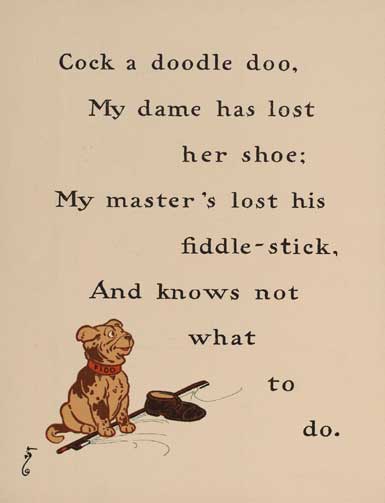
Cock a doodle doo: from Denslow's Mother Goose, W.W. Denslow, 1901 (hand-lettering by Fred W. Goudy)
As these practical distinctions are pressed, within a given mode of production, art and artist acquire ever more general (and more vague) associations, offering to express a general human (i.e. non-utilitarian) interest, even while, ironically, most works of art are effectively treated as commodities and most artists, even when they justly claim quite other intentions, are effectively treated as a category of independent craftsmen or skilled workers producing a certain kind of marginal commodity.
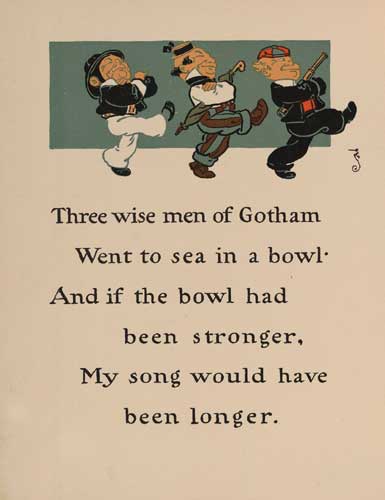
Cock a doodle doo: from Denslow's Mother Goose, W.W. Denslow, 1901 (hand-lettering by Fred W. Goudy)
Art: Raymond Williams, edited excerpts from Keywords: A Vocabulary of Culture and Society, 1976



6 comments:
A craft note: the lettering in Denslow's Mother Goose was done by the noted typographer Frederic W. Goudy, designer of some one hundred type faces.
In 1902 Goudy charged that the Mother Goose calligraphy he had done for Denslow had been pirated in a "new" type design advertised as "the latest face, original and attractive character" -- and, to make matters worse, named after someone Goudy didn't much care for.
"To my surprise," Goudy would recall, "a little later on, the Inland Type Foundry of Saint Louis, without consultation with me, brought out a new type copied--not inspired--from my Denslow lettering, and added insult to injury by naming it Hearst."
Tom,
Very nice to see these pages from Mother Goose with Goudy's letters. My mother used to call me "Deedles" when I was a kid, so that one especially takes me back. . . .
9.26
light coming into fog against invisible
ridge, black shapes of leaves on branch
in foreground, sound of wave in channel
therefore events which “come
over,” concealed so not
glimpsed in it, looking then
for it, having it there
cloudless blue sky reflected in channel
gull flapping to the right toward point
Isn't it nice to make art that nobody makes money from?
Billy,
It had better be.
(gull flapping to the right)
Art: "defensive specialization of certain skills and purposes…not determined by immediate exchange".
Artist: " a category of independent craftsmen or skilled workers producing a certain kind of marginal commodity".
Well, that's stated clearly.
I do love the Goudy lettering here and will try to find examples of the Hearst and compare them. And the final two rhymes are my favorites, along with Steve's lines:
"therefore events which “come
over,” concealed so not
glimpsed in it"
Damned right, TC.
Post a Comment